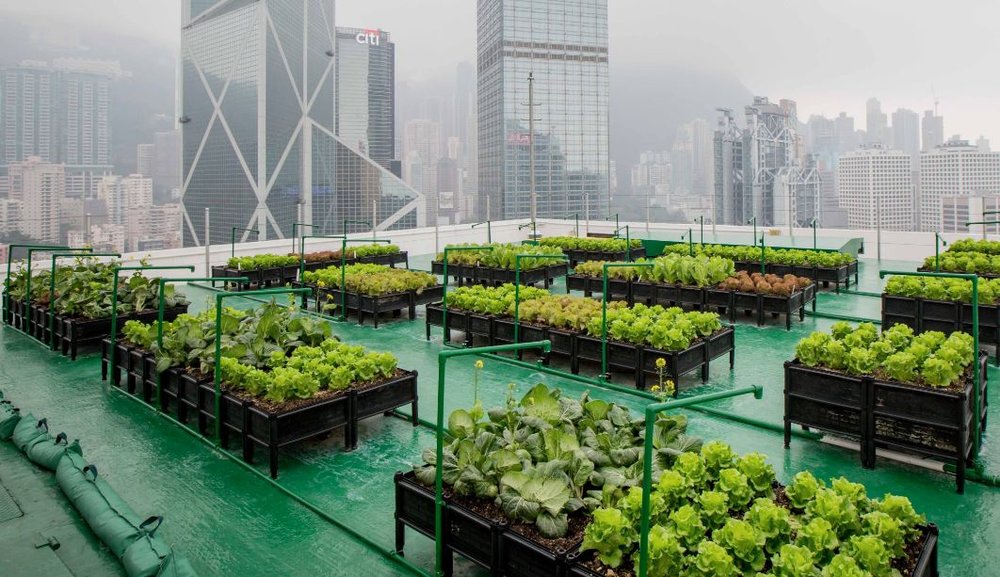City Blooming - An Overview
City Blooming - An Overview
Blog Article
Getting The City Blooming To Work
Table of ContentsThe Ultimate Guide To City Blooming3 Easy Facts About City Blooming DescribedThe smart Trick of City Blooming That Nobody is DiscussingThe 2-Minute Rule for City BloomingThe smart Trick of City Blooming That Nobody is Talking About
Interested in growing food for sale in the City of Chicago? Below is a checklist of often asked concerns concerning the regulations and regulations that farmers need to consider when preparing an urban farming project.
The zoning amendment does not customize any kind of other codes managing composting, building authorizations, acquiring or leasing City possessed residential or commercial property, business licenses or environmental contamination. There are existing codes that regulate these concerns and they stay in full result and may apply to your project. Neighborhood yards are normally had or taken care of by public entities, civic organizations or community-based companies and maintained by volunteers.
Urban ranches expand food that is intended to be sold, either on a nonprofit or for-profit basis. Due to their commercial purpose, urban ranches need an organization certificate.
Rumored Buzz on City Blooming
The quantity of compost product can not surpass 25 cubic lawns at any provided time according to the requirements in 7-28-715 of the City's Municipal Code. Because the dirt at most new garden websites requires amending, compost, dirt, wood chips, or various other products can be acquired to build or enhance the expanding space.

If a building permit is called for after that the hoophouse will certainly be taken into consideration an accessory structure. You can discover even more about the structure permit needs by calling the Department of Buildings. The 25,000-square-foot dimension limit is meant to avoid a solitary community yard from dominating a given block or diminishing the block's existing household or industrial character.
The restriction does not apply to yards located in Public Open Area (POS) areas. Can there be even more than one community garden that is 25,000 square feet on a solitary block? Fence is not called for, however, gardens that have huge vehicle parking locations may be required to install fencing or other landscape design attributes.
Getting My City Blooming To Work
B1 & B2 areas need that all industrial usage tasks be performed indoors. Is fencing needed for city farms? Fences might be needed, along with landscaping and screening, for certain auto parking locations and outdoor job or storage space areas depending on area and the certain activity taking place.
Urban ranches require building authorizations and zoning authorizations prior to building see here (garden care). Other types of city evaluation might be needed depending on specific frameworks, tasks, size, landscape design, licensing, public heath and stormwater administration problems.
The Department of Business Matters and Customer Security can aid determine the details type of business permit that's needed. Off road auto parking is required for most industrial tasks in Chicago. The called for number of auto parking rooms is based on the number of workers working on site and not the square video footage of the expanding area.
Indicators on City Blooming You Should Know

A metropolitan ranch can market compost product created on site, nevertheless, the operation needs to conform with the policies in 7-28-715 of the Chicago Municipal Code. Aquaponic systems are permitted indoors on urban ranches in lots of zoning areas.
As much as 5 hives or swarms of honey may be kept as an accessory usage. Nevertheless, beekeepers need to sign up with the Illinois Department of Agriculture. For more information concerning the proposed zoning amendment you might call the Division of Real Estate and Economic Development, Bureau of Preparation and Zoning at 312.744.8563.
Farming in cities and city locations An urban farm in Chicago. Urban agriculture describes various methods of cultivating. https://soundcloud.com/cityblooming, processing, and dispersing food in city areas. The term also relates to the area activities of pet husbandry, tank farming, beekeeping, and cultivation in an urban context. Urban farming is identified from peri-urban agriculture, which takes place in backwoods at the side of suburbs.
About City Blooming
, who look for to develop social networks founded on a shared principles of nature and community holism. These networks can establish by means of formal institutional assistance, ending up being incorporated right into regional town preparation as a "transition community" activity for sustainable metropolitan development.
Some of the first proof of urban agriculture comes from Mesopotamia.
Report this page